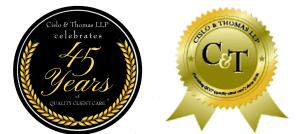Prepared by Cislo & Thomas LLP Attorney Mark D. Nielsen, Ph.D.
1. In a new petition for certiorari to the U.S. Supreme Court, the issue presented is whether a trademark infringement plaintiff must prove that the infringement was willful in order to be entitled to a disgorgement of the infringer’s profits. There is a long-standing almost 50/50 circuit split on this issue among the federal appeals courts. Some courts require willfulness to disgorge an infringer’s profits, and some do not. Notably, circuit splits are a significant factor in whether or not a cert petition is granted. Here, it would seem a grant would be warranted to harmonize the law on this issue throughout the U.S. In a previous post, the author noted that even within the Ninth Circuit, one of the circuits that seems to require a showing of willfulness to disgorge an infringer’s profits, the law on this issue has been muddled. As previously stated, “Hope Road Merchandising, LLC and 56 Hope Road Music Ltd., companies that control the rights to the late Bob Marley’s music, image/likeness, etc., had a damages award of approximately $2.5 million affirmed in an unpublished opinion by the Ninth Circuit Court of Appeals against a former licensee as it pertained to Marley-branded coffee (Jammin’ Java). The interesting aspect of the ruling is the Ninth Circuit’s determination that where a trademark plaintiff is using a defendant’s profits as a measure of its own damages, a finding of willful infringement is “not necessary.” . Recently, [however], the Ninth Circuit also held in Stone Creek, Inc. v. Omnia Italian Design, Inc. that where a trademark plaintiff seeks to disgorge a defendant’s profits, a showing of willfulness is required (see p. 1144 of the opinion). The distinction may be whether the disgorgement is part of a broader remedy or is the measure of plaintiff’s damages.” The author recalls battles over jury instructions within the past five (5) years on this very issue. Thus, it is believed that this is a case for which cert should be granted.
2. Not long after the Continental Circuits v. Intel opinion, the Federal Circuit issued another very methodical claim construction opinion, construing the term “100% by weight.”
3. Members of the Senate Judiciary Committee have released a bi-partisan “framework” regarding a possible Congressional re-working of 35 U.S.C. Section 101, the interpretation of which has been problematic in many respects in the past five (5) years or so since the Supreme Court’s Mayo and Alice opinions. Section 101 defines the scope of patent eligible subject matter. In other words, what types of technologies and inventions may be patentable, assuming other factors. The framework, in a number of respects, sounds promising, and is part of a more protracted effort to involve stakeholders in revising Section 101 in an acceptable manner, and in a manner that, hopefully, will not produce as much confusion and uncertainty as the courts’ efforts to interpret Section 101. The idea is to statutorily restrict the scope of patentable subject matter in a clear, defined manner, but a less restrictive manner than presently applied under Supreme Court precedent. One concept in the framework that should help is to make clear that novelty (Section 102) and non-obviousness (Section 103) are not part of the inquiry into patentable subject matter under Section 101. Another helpful approach in the framework, which tracks the USPTO’s recent revisions to its eligibility guidance to patent examiners is to have a “practical application” factor that would typically not render ineligible inventions that have a defined practical application. One concern with the framework is the point regarding generic technical or functional language not salvaging an otherwise ineligible claim. That point has raised concern, and needs to be fleshed out further. While perfunctorily automating a manual or mental process in a “generic” manner by simply putting a process or method on a computer may not be enough to overcome the Section 101 filter, lawmakers should be careful in this area and recall the Supreme Court’s warning in Alice to “tread carefully in construing this exclusionary principle lest it swallow all of patent law.” It will be interesting to see how this framework progresses through Congress. Kudos to Sens. Coons, Tillis, and others for making a serious effort.



